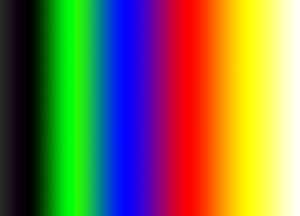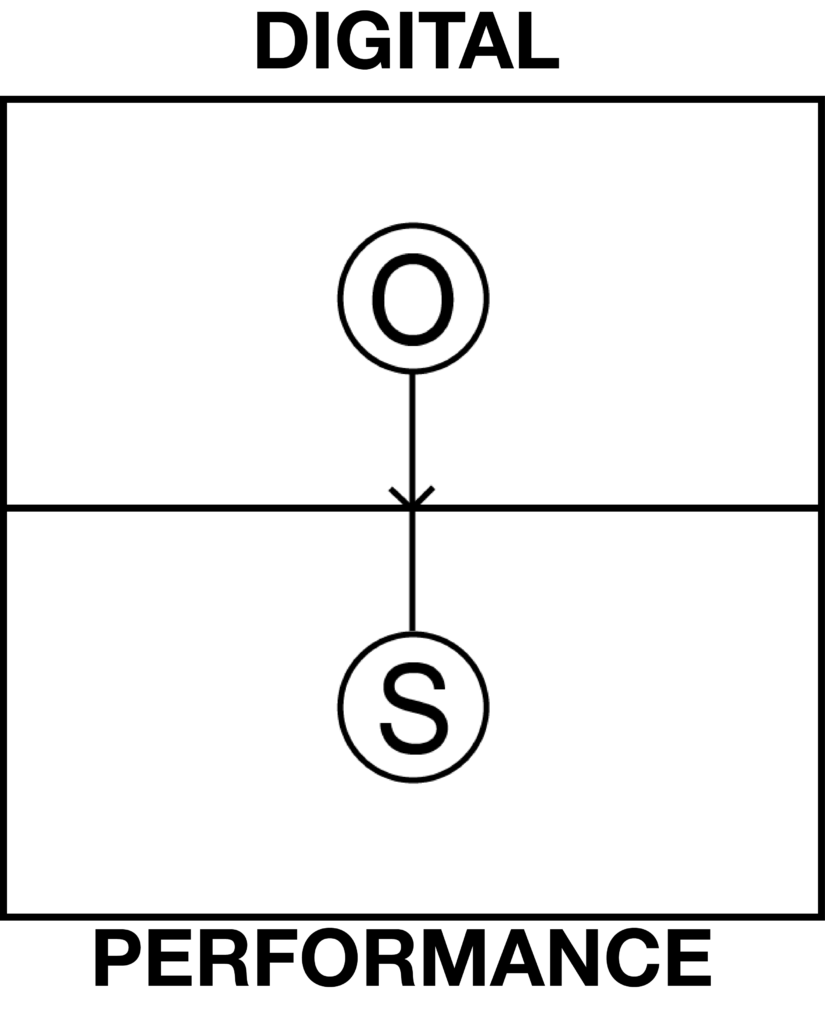Abstractions is a reactive audio-visual installation designed to generate a sonic response to colour in abstract paintings. It was initially designed for the work of local artist, John Montgommery, whose website can be found here. I sought to create a sonic response to his work whilst respecting its abstract nature. Montgommery tries to let his subconscious take over as he paints, therefore any shapes or images that come from his process are left for the viewer to interpret. After he has filled the canvas, if he feels that there are too many recognisable elements such as geometric shapes or patterns, he will paint another layer on top. The layering process will continue until Montgommery is satisfied with his painting. I wanted to create a similar abstract impression in my installation, therefore the sounds are inherently abstract computer-generated tones as opposed to recorded samples. They layer on top of eachother, like the layers of paint on Motgommery’s canvas.

Multiple actions are happening all at once in this installation. Primarily, a photograph of the painting is shown on the screen and a pixel is selected at random. The pitch of each tone is dependent upon the colour of the selected pixel. Shown above is an example of transitions from low-pitched tones to high-pitched tones (left to right). Once a pixel has been selected, the program draws a square (30px*30px) of the same colour directly over it. This square remains there for the duration of the installation and blocks out a 30px*30px square of the painting underneath. As these squares build up, more of the original painting is obscured, consequently limiting the colours that the program can now select. Over an extended period of time, the painting will eventually be covered by only one colour. The sound will be unchanging and this forms the end of the installation. This slow obscuration of the painting is symbolic of removing its human agency as we no longer see the brushstrokes or the subconscious imagery. We move from shapes and form and composition to coloured pixels, which do not hold the same meaning, although some viewers have commented that they can see faces or characters emerging. This recognition of images in the layering of coloured squares is simply coincidental but demonstrates our human tendency to constantly search for meaning.
The rate at which the pixels are selected is also dependent upon the painting. As well as selecting pixels at random, I set up the code to gather colour values from every pixel in turn, starting from the top left and reading straight across. Once the script reached the edge of the painting it would start back at the left again but on the next row down. The colour value of each pixel dictates how long the program waits until the next pixel is selected – it sets the frame rate. This value constantly changes, with darker colours waiting longer and brighter colours (with a higher red value) causing it to move quickly. In this way, the piece structures itself, going through slower phases and faster phases. Overall, the pace is quite fast, ranging from ~15 pixels per second to ~60. As such, the layering of pitches can be quite random. Just as some people can see faces in the squares, sometimes pitches will align that make a melody or an interesting harmonic progression. However, not all listeners will make the same melodic connections as each other. What sounds melodic to one listener may not be melodic to another. These serendipitous moments are analogous to the shapes and images that appear present in Montgommery’s work. As the installation progresses, it trades its visual form for a sonic form, creating in sound what could once be seen – moments of clarity amongst moments of chaos.
The installation might take days to reach its end – at which point a new painting is selected and the process starts again. I do not intend for viewers to attend to the piece for hours, rather that they check back periodically to see how the work has progressed in that time. In this way, the viewer can notice changes in the slowly shifting sound profile.
3.6.1. Programme Note
Abstractions (2019) is an audiovisual installation that uses the abstract paintings of John Montgommery as a starting point. The computer programme randomly selects pixels of the painting from which to extract a colour value. Once this value is gained, the program draws a 30px*30px box of that same colour over its location on the painting and uses the value to generate sound. The pitch of the sound is roughly dependent on the brightness of the colour, with darker pixels producing a generally lower sound and brighter pixels typically producing a higher sound. The program uses colour values to structure itself, moving through slower and faster phases depending on the colour of the pixel it is detecting. As Montgommery’s work involves him surrendering control and letting his subconscious take over, the squares that quickly begin to clutter the screen are an attempt to remove any sense of agency from the piece. No longer can the viewer see the brushstrokes or the shapes that they once could see. Any recognisable images that come from the screen are purely coincidental and lacking in that sense of human agency. The same is true of the sound. The pitches can seem random, however moments will appear when there seem to be hints of a melody. Again, these moments are coincidental and without the human agency one might expect from sound.
3.6.2. S.O.A.P. Analysis

Digital Environment – Objects
With this piece I wanted to attempt to eliminate as many aspects of S.O.A.P. as possible whilst still creating an interesting and thoughtful piece. As long as there is sound to be heard, there will always be an ‘O’ present in the diagram. Nothing has been altered in the digital environment or purposefully arranged in the real-world environment of the performance. The sounds used are computer generated sounds – a series of sine waves with a basic envelope, streams of which then pass through various flangers and the GRM freezing plugin. Computer generated sounds tend to have a weaker link to human agency compared to recorded samples from the real world. The agency of the visuals is another matter, however. In the examples of Montgommery’s paintings, we can see the texture of the brushstrokes, we can see paint dripping down the canvas. There is a lot of movement in his paintings where you can visualise Montgommery standing in front of the canvas moving the paintbrush quickly across it. The visuals of the installation are an attempt to remove this agency, painting over his work in the same colours but removing the detail that indicates to us the gesture and energy used in the strokes.
Performance Environment – Space
And as long as there are sound waves travelling through space, the sonic footprint of the acoustics will always be present on the sound before we get a chance to perceive it. Therefore, just like objects, the space of the performance environment is another unavoidable aspect. This installation requires a screen and a pair of speakers.
3.6.3 The Effect of the Analysis
Rather than being a piece to analyse, Abstractions was designed as a test for S.O.A.P., pushing the limits of what is required for a piece of sound art. Due to the nature of the piece, all elements were designed consciously as they had to be coded into the program. Although I had only limited control over the sound that the program created, I ensured that the resulting audio would be varied, not only in pitch, but in sound durations. There is a droning undercurrent as well and short pitches that fly off.
I felt that by stripping away as much as I could from the installation, my voice as a composer was somewhat lost. I gained little new information from analysing Abstractions after its completion and I believe this was due to the lack of freedom the idea afforded me. I still think that the concept is interesting and that the final output is strong. However, the main conclusion from this installation is that my voice as a composer comes through more when the limitations are not so strict. It is the presence of this voice that allows S.O.A.P. analysis to be fruitful for the composer.
